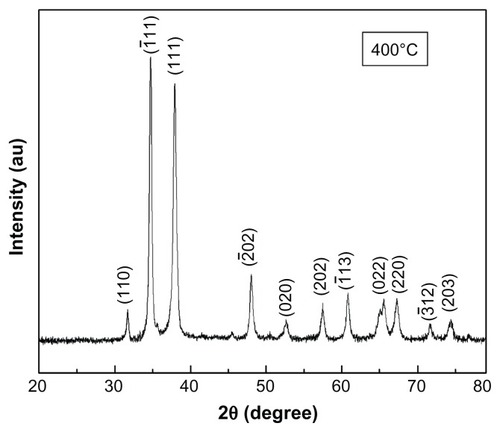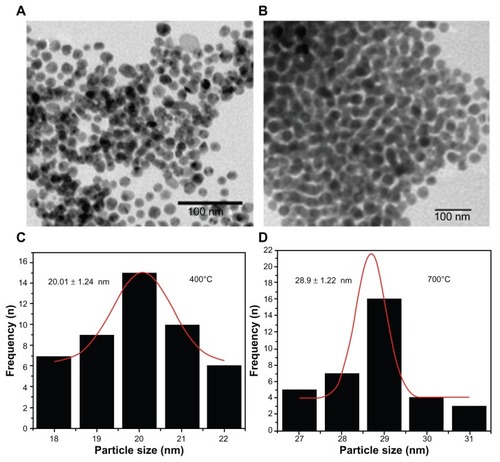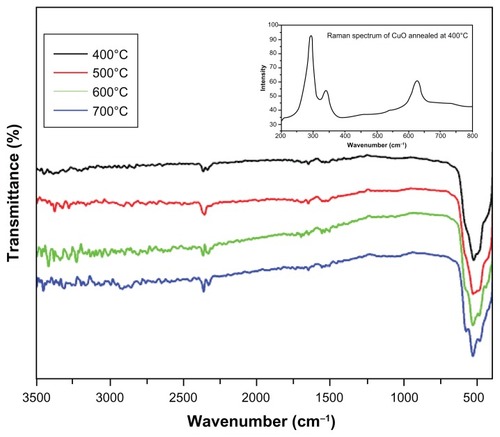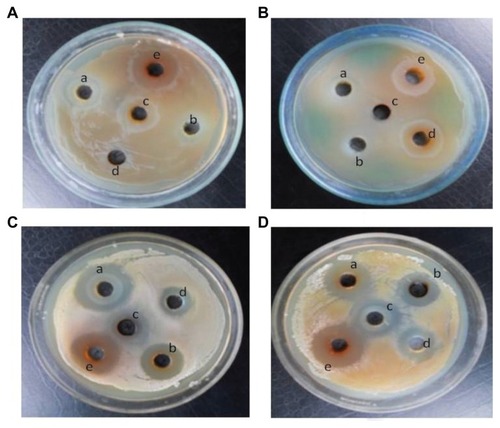Figures & data
Table 1 Variation of crystallite size and lattice parameters with annealing temperature
Figure 1 XRD spectra of CuO nanoparticles annealed at 400°C.
Abbreviations: XRD, X-ray diffraction; CuO, copper oxide; AU, units of intensity.

Figure 2 XRD spectra of CuO nanoparticles annealed at different temperatures.
Abbreviations: XRD, X-ray diffraction; CuO, copper oxide; AU, units of intensity.

Figure 3 TEM image of CuO nanoparticles.
Notes: TEM image of CuO nanoparticles annealed at (a) 400°C (b) 700°C.
Abbreviations: TEM, transmission electron microscopy; CuO, copper oxide; n, number.

Figure 4 FTIR spectra of CuO nanoparticles annealed at different temperatures.
Note: Inset shows Raman spectrum of CuO nanoparticles annealed at 400°C.
Abbreviations: FTIR, Fourier-transform infrared spectroscopy; CuO, copper oxide.

Table 2 Antimicrobial activity of copper oxide (CuO) nanoparticles against two Gram-positive and two Gram-negative bacteria
Table 3 MIC of copper oxide nanoparticles (annealed at different temperatures) against different laboratory bacterial strains
Table 4 MBC of copper oxide nanoparticles (annealed at different temperatures) against different laboratory bacterial strains
Figure 5 Zone of inhibition of copper oxide nanoparticles.
Notes: Zone of inhibition of copper oxide nanoparticles synthesized at different temperatures (a–d) and positive control, a known antibiotic tetracycline (e) against two Gram-negative bacteria (A) Escherichia coli and (B) Pseudomonas aeruginosa, and two Gram-positive bacteria (C) Bacillus subtilis and (D) Staphylococcus aureus.

